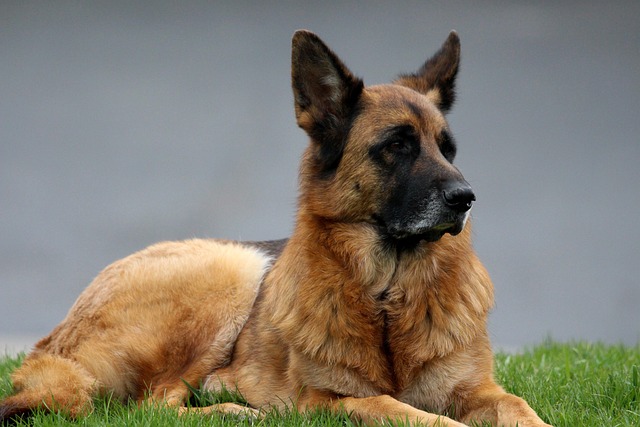
How can I tell if my dog's heatstroke is serious
Let’s be real: It’s a sticky August morning in Los Angeles, and you took your 2-year-old Golden Retriever, Max, for a walk a little later than usual
Seeing your tiny furball’s bright eyes and wagging tail is pure joy, but a less glamorous part of pet parenthood is keeping those little chompers clean. Neglecting your small dog’s dental health isn’t just about bad breath—it can lead to serious issues like gum disease, tooth loss, and even organ problems down the line. Understanding the right brushing routine makes all the difference in your pup’s long-term wellness.
Many pet owners underestimate how quickly plaque builds up on small dog teeth. Their smaller mouths mean less space for teeth, increasing the risk of food particles getting trapped. Signs of poor dental hygiene include yellowish teeth, red gums, excessive drooling, or reluctance to eat hard treats. While an annual dental check-up at the vet is crucial (and often required by local pet care regulations), daily at-home care is equally important.
When it comes to frequency, aim to brush your small dog’s teeth daily if possible. Think of it like your own oral care routine—consistency is key. But if that’s unrealistic, aim for at least 3-4 times a week. Skipping too many sessions allows plaque to harden into tartar, which only a professional can remove safely. Remember, improper at-home treatment could violate animal welfare guidelines in some areas, so it’s better to do it right or seek professional help.
 Choosing the right tools matters. Opt for a soft-bristled toothbrush designed specifically for small dogs or finger brushes that fit snugly over your index finger. Avoid human toothpaste, as it often contains xylitol, an ingredient toxic to dogs. Instead, use pet-safe toothpaste in flavors like chicken or beef that make brushing more appealing. Many local pet stores stock approved products, helping you stay compliant with consumer safety regulations.
Choosing the right tools matters. Opt for a soft-bristled toothbrush designed specifically for small dogs or finger brushes that fit snugly over your index finger. Avoid human toothpaste, as it often contains xylitol, an ingredient toxic to dogs. Instead, use pet-safe toothpaste in flavors like chicken or beef that make brushing more appealing. Many local pet stores stock approved products, helping you stay compliant with consumer safety regulations.
Brushing technique is simple but requires patience. Lift your dog’s lips gently to expose the teeth and start with slow, circular motions along the gum line. Focus on the outer surfaces first, as these are most prone to buildup. Be gentle—small dogs have sensitive mouths, and forcing the brush can cause stress or injury. Reward your pup with praise and tiny treats during and after each session to build positive associations.
If your dog resists brushing, start slowly. Let them sniff and lick the toothbrush and toothpaste first to get used to the sensations. Gradually increase contact time, turning it into a fun bonding activity rather than a chore. Some pet parents find success with dental wipes on particularly stubborn days, though these should supplement—not replace—regular brushing. Just ensure any alternative products meet industry safety standards.
Beyond brushing, incorporate dental-friendly habits into your dog’s routine. Offer appropriate chew toys and treats designed to reduce plaque. Many communities have regulations about pet product safety, so choose items labeled “dental-approved.” Dry kibble can also help scrape away debris, but don’t rely on it as a substitute for brushing. Regular vet cleanings, often covered by pet insurance in many regions, provide a deeper level of care.
Taking care of your small dog’s teeth is an act of love that pays off in a healthy, happy companion. By following these tips and maintaining a consistent routine, you’ll not only keep those pearly whites shining but also ensure your pup enjoys a lifetime of comfortable chewing and wagging tails.

Let’s be real: It’s a sticky August morning in Los Angeles, and you took your 2-year-old Golden Retriever, Max, for a walk a little later than usual

You're enjoying a summer afternoon at the park when you notice your dog has stopped panting and appears disoriented - their gums are bright red

Let’s paint the picture: You’re in your Denver apartment, watching your 4-year-old Boston Terrier, Ruby, plop down mid-play session with her favorite toy

Many dog owners notice their pets nails seem shorter after regular walks,but how much does this daily activity actually help?The answer depends on where you walk—concrete sidewalks or asphalt streets gently file nails as a dog's paws hit the ground

Most dog owners notice their pup scooting across the carpet at some point, but few connect it to impacted anal glands. These small sacs near a dog’s rectum secrete a scent for marking territory

Most vets agree that regular dog teeth cleaning is key to avoiding painful dental issues later. For healthy adult dogs, a professional cleaning at the vet’s office every 12 to 18 months usually works well.